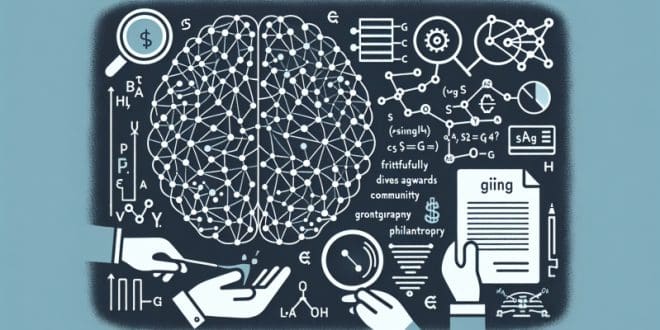Welcome to Grants Club’s latest community blog post, where we’re peering into the transformative power of artificial intelligence (AI) and machine learning (ML) in the world of grant seeking and philanthropy—a landscape forever altered by these technological marvels.
As nonprofit organizations and research institutions progressively seek innovative ways to secure funding, AI and ML emerge as frontier tools, redefining the quest for grants. These technologies are not just buzzwords; they have practical applications that are significantly changing how funding opportunities are identified, trends are predicted, and requests are personalized.
### Identifying Funding Opportunities
With AI-driven data analysis, organizations can now sift through vast databases of grant opportunities with unparalleled precision, uncovering options that might have previously evaded them. ML algorithms learn which grants were successful and suggest similar opportunities, therefore enhancing the efficiency of grant seeking.
### Predicting Granting Trends
Machine learning’s predictive capabilities are a game-changer. By analyzing past funding patterns, these systems can forecast future trends, enabling non-profits to strategically position themselves amid shifting funding landscapes and emerging fields of interest among donors.
### Personalizing Funding Requests
Personalization is key in making a compelling case for support, and AI excels here. ML algorithms can help tailor funding proposals to the preferences and interests of specific grantors, increasing the likelihood of success by speaking directly to what funders care about.
### Ethical Considerations and Biases
Despite these benefits, we must address the elephant in the room: ethical considerations and potential biases. AI systems are only as unbiased as the data they are trained on. Therefore, there’s a risk of perpetuating historical prejudices and exclusion, unintentionally favoring certain groups over others in the grant allocation process.
### Democratization vs. Complication
Can AI and ML democratize grant accessibility? Potentially yes, by leveling the playing field and giving all organizations equal opportunity to discover relevant grants. Conversely, there’s a risk of complicating access, as those with advanced technological capabilities might disproportionately benefit from these tools.
### Safeguards and Literacy
To ensure fair and equitable access to grants, the nonprofit sector must adopt appropriate safeguards. This includes fostering AI and ML literacy, so grant seekers understand how to use these tools effectively and ethically. Investments in training and resources are essential to enable all organizations to harness the potential of AI and ML.
In conclusion, while AI and machine learning are revolutionizing grant seeking and philanthropy, it’s crucial to navigate this new era with a balanced perspective. Embracing the benefits while vigilantly addressing the challenges will be pivotal in ensuring that these technologies serve as catalysts for positive change in the philanthropic community.
Join the conversation and exploration at Grants Club, where we remain committed to empowering non-profits and researchers with cutting-edge insights and tools. Together, we can chart a course through the evolving world of grant seeking—a course marked by innovation, inclusivity, and integrity.
 Grants Club Community
Grants Club Community







